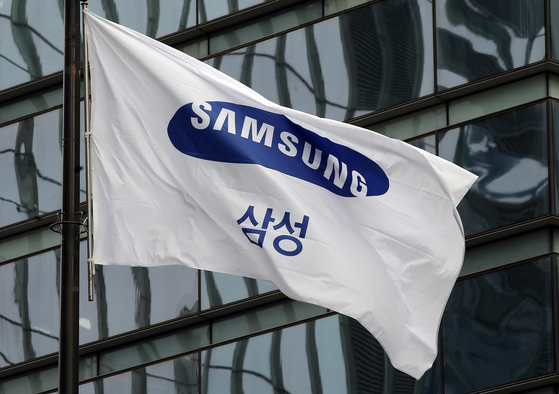![Samsung Electronics reinvested 25% of last year's sales as facility investment and R&D expenses. The photo is Samsung Electronics' Seocho office building in Seocho-gu, Seoul. [뉴스1]](https://i0.wp.com/pds.joins.com/news/component/htmlphoto_mmdata/202103/10/87c811a3-f3b0-4656-a590-451b431f6079.jpg?w=560&ssl=1)
Samsung Electronics reinvested 25% of last year’s sales as facility investment and R&D expenses. The photo is Samsung Electronics’ Seocho office building in Seocho-gu, Seoul. [뉴스1]
It was found that Samsung Electronics invested 38.5 trillion won in facility investment and 21.2 trillion won in R&D last year. The amount of investment in production facilities and R&D over the past three years was 15.46 trillion won. In particular, this year, the semiconductor super cycle (super boom) is expected and the investment is expected to increase further.
R&D expenditure 21.2 trillion won, the highest in history
According to the 2020 business report announced by Samsung Electronics on the 10th, the company’s facility investment last year was 38,496.9 billion won. Compared to the investment of 29 trillion and 398.6 billion won and 26,894.8 billion won respectively in 2018 and 2019, this is an increase of more than 10 trillion won. It is the second largest since 2017, when the peak of the semiconductor super cycle was 4.34 trillion won. The R&D expenditure was 21 trillion 29.2 billion won, the highest amount ever.
Of the facility investment, 85% of the investment cost of 32,891.5 billion won was invested in the semiconductor business. The scale has grown with the transition to advanced processes. The investment cost increased as the semiconductor consignment production (Foundry) introduced and expanded the process based on extreme ultraviolet (EUV). It made preemptive investments ahead of the semiconductor boom period, such as the foundry business’s EUV 5-nano process.
In the display, investment cost has increased, focusing on the expansion of quantum dot (QD) display production capacity (DAPA) and small and medium-sized new technology processes. It invested a total of 3,889.5 billion won. It spent 1,715.9 billion won on other facilities.
Employment increased by 4200, reaching 110,000
As facility investment increased, so did jobs. As of the end of last year, Samsung Electronics had 109490 domestic employees. At the end of 2019, there was an increase of 4,233 from 105,257.
Of particular note is the expansion of R&D investment. Samsung Electronics invested 21,229 trillion won in R&D alone last year. It amounts to 9% of total sales. The proportion of Samsung Electronics’ R&D investment to sales has steadily increased from 7% in 2017 to 7.7% in 2018 and 8.8% in 2019.
Last year, Samsung Electronics acquired 6648 domestic patents and 8520 US patents through R&D investment. Most are patents related to smartphones, smart TVs and semiconductors. The number of patents held by the company totaled 19,7749 worldwide (as of the end of last year), an increase of 9.8% from the previous year.
In the last three years (2018-2020), facility investment and R&D were added to total KRW 154,5591 billion. In August 2018, Samsung invested 180 trillion won (130 trillion won in Korea) over three years in four major fields, including artificial intelligence (AI), bio, 5th generation mobile communication (5G), and electronic components through the “three-year economic revitalization measures” in August 2018. Said that. It also made plans to hire 40,000 people. Among them, Samsung Electronics invested more than 154 trillion won.
![According to the 2020 business report released by Samsung Electronics on the 9th, last year's R&D expenditure increased by 1 trillion won compared to the previous year, with a total of 21.2 trillion won, which was the highest ever.[연합뉴스]](https://i0.wp.com/pds.joins.com/news/component/htmlphoto_mmdata/202103/10/d61944f7-b27d-4f17-a2dd-9b1636232eff.jpg?w=560&ssl=1)
According to the 2020 business report released by Samsung Electronics on the 9th, last year’s R&D expenditure increased by 1 trillion won compared to the previous year, with a total of 21.2 trillion won, which was the highest ever.[연합뉴스]
Securities market “Invest 19 trillion won in US semiconductor factories”
Samsung Electronics plans to continue large-scale investments this year, focusing on memory and system semiconductors. In its business report, Samsung Electronics said, “This year, we will continue to invest to strengthen the competitiveness of our flagship businesses, such as expansion and conversion of memory and system semiconductor front-end processes, investment in infrastructure, and investment in expansion of display panels (DP).”
According to the industry, Samsung Electronics is expanding its DRAM investment this year. Initially, it was planned to add 30,000 units of 12-inch wafers per month to the Pyeongtaek 2 plant, but this amount was increased to 40,000.
Investment in foundry facilities is also increased. The scale of the 5-nanometer (nm) foundry line to be built at the Pyeongtaek 2 plant has been increased from 28,000 to 43,000. It is known that EUV exposure equipment will also be deployed in this foundry line to respond to rapidly increasing foundry demand. It is reported that the NAND flash production line at the 2nd factory in Xi’an, China, will be invested in a scale of 80,000, a significant increase from the 50,000 expected by the industry.
![A panoramic view of the P2 line of Samsung Electronics' Pyeongtaek Campus. [사진 삼성전자]](https://i0.wp.com/pds.joins.com/news/component/htmlphoto_mmdata/202103/10/4dd99f28-4a30-4618-adac-d1f53f127f55.jpg?w=560&ssl=1)
A panoramic view of the P2 line of Samsung Electronics’ Pyeongtaek Campus. [사진 삼성전자]
Securities market predicts that Samsung Electronics will expand its foundry plant in Austin, Texas, in the second half of this year. In a recent report, KTB Investment & Securities predicted that “Samsung Electronics has decided to invest in Austin,” and “The start of construction will be in the second half of this year, and mass production will be in 2023.” The investment amount is 17 billion dollars (about 19 trillion won). Samsung Electronics is in the position that “it has not been confirmed”.
Reporter Park Hyung-soo [email protected]
![]()
